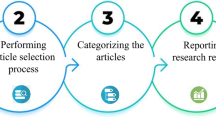Abstract
With the rapid development of sensors, wireless communication, and cloud computing, information technology today focuses on service environments created by the Internet of Things (IoT). IoT technologies have become widely used in various contexts including smart homes, building management, surveillance services, and smart farms. Some IoT applications such as Siri are popular in everyday life. IoT requires communication and interaction between various devices and services. To solve the various complex problems associated with IoT services, earlier research focused on IoT service platforms such as gateways and mobile edge computing services. However, the similarities and reusabilities of IoT services have received little attention. In this paper, we develop an IoT service classification and clustering system. We classify the operation of an IoT service into four steps that differ in their characteristics. Based on this classification, we extend the classic EM (expectation–maximization) algorithm to cluster IoT services in terms of their similarities. To validate our proposed classification and clustering system, we divide over 100 commercial IoT services into five clusters, showing that such services are well clustered by similarity and purpose.





Similar content being viewed by others
References
Nambi SAU et al (2014) A unified semantic knowledge base for IoT. In: 2014 IEEE World Forum on Internet of Things (WF-IoT). IEEE, pp 575–580
Fan YJ et al (2014) IoT-based smart rehabilitation system. IEEE Trans Ind Inf 10(2):1568–1577
Dorsemaine B et al (2015) Internet of things: a definition & taxonomy. In: 2015 9th International Conference on Next Generation Mobile Applications, Services and Technologies. IEEE, 2015, pp 72–77
Truong H-L, Dustdar S (2015) Principles for engineering IoT cloud systems. IEEE Cloud Comput 2(2):68–76
Viswanathan H et al (2015) Uncertainty-aware autonomic resource provisioning for mobile cloud computing. IEEE Trans Parallel Distrib Syst 26(8):2363–2372
Chen H et al (2016) Uncertainty-aware real-time workflow scheduling in the cloud. In: 2016 IEEE 9th International Conference on Cloud Computing (CLOUD). IEEE, pp 577–584
Jamshidi P, Pahl C, Mendonça NC (2016) Managing uncertainty in autonomic cloud elasticity controllers. IEEE Cloud Comput 3(3):50–60
Nastic S et al (2015) Governing elastic IoT cloud systems under uncertainty. In: 2015 IEEE 7th International Conference on Cloud Computing Technology and Science (CloudCom). IEEE, pp 131–138
Soldatos J, Serrano M, Hauswirth M (2012) Convergence of utility computing with the internet-of-things. In: 2012 Sixth International Conference on Innovative Mobile and Internet Services in Ubiquitous Computing (IMIS). IEEE, pp 874–879
Botta A et al (2014) On the integration of cloud computing and internet of things. In: 2014 International Conference on Future Internet of Things and Cloud (FiCloud). IEEE, pp 23–30
Perera C et al (2014) Context aware computing for the internet of things: a survey. IEEE Commun Surv Tutor 16(1):414–454
Castro M, Jara AJ, Skarmeta AF (2012) An analysis of M2M platforms: challenges and opportunities for the Internet of Things. In: 2012 Sixth International Conference on Innovative Mobile and Internet Services in Ubiquitous Computing (IMIS). IEEE, pp 757–762
Nastic S et al (2014) Provisioning software-defined IoT cloud systems. In: 2014 International Conference on Future Internet of Things and Cloud (FiCloud). IEEE, pp 288–295
Lea R, Blackstock M (2014) City hub: a cloud-based IoT platform for smart cities. In: 2014 IEEE 6th International Conference on Cloud Computing Technology and Science (CloudCom). IEEE, pp 799–804
Zhu Q et al (2010) IoT gateway: bridging wireless sensor networks into internet of things. In: 2010 IEEE/IFIP 8th International Conference on Embedded and Ubiquitous Computing (EUC). IEEE, pp 347–352
Lee D, Park K (2017) Development of IoT service classification algorithm for integrated service platform. Int J Adv Sci Eng Inf Technol 7(4):1206–1212
Sammarco EC, Iera EA, De Capua EC. Energy efficient procedures for an autonomous Internet of Things. http://www.chiarasammarco.com/pub/phdthesis2012-sammarco.pdf
Thoma M et al (2012) On IoT-services: survey, classification and enterprise integration. In: 2012 IEEE International Conference on Green Computing and Communications (GreenCom). IEEE, pp 257–260
Ning H, Hu S (2012) Technology classification, industry, and education for future Internet of Things. Int J Commun Syst 25(9):1230–1241
Kelly SDT, Suryadevara NK, Mukhopadhyay SC (2013) Towards the implementation of IoT for environmental condition monitoring in homes. IEEE Sens J 13(10):3846–3853
Beck MT et al (2014) Mobile edge computing: a taxonomy. In: Proceedings of the Sixth International Conference on Advances in Future Internet. Citeseer, pp 48–55
Mao Y et al (2017) A survey on mobile edge computing: the communication perspective. IEEE Commun Surv Tutor 19(4):2322–2358
Mao Y, Zhang J, Letaief KB (2016) Dynamic computation offloading for mobile-edge computing with energy harvesting devices. IEEE J Sel Areas Commun 34(12):3590–3605
Kumar Y, Sahoo G (2017) An improved cat swarm optimization algorithm based on opposition-based learning and Cauchy operator for clustering. JIPS (J Inf Process Syst) 13(4):1000–1013
Iam-On N, Boongoen T (2017) Generating a descriptive model for student dropout: a review of clustering approach. Hum Centric Comput Inf Sci 7(1):1
Dempster AP, Laird NM, Rubin DB (1977) Maximum likelihood from incomplete data via the EM algorithm. J R Stat Soc Ser B (Methodological) 1977:1–38
Masson P, Pieczynski W (1993) SEM algorithm and unsupervised statistical segmentation of satellite images. IEEE Trans Geosci Remote Sens 31(3):618–633
Bradley PS et al (1998) Scaling EM (expectation–maximization) clustering to large databases. Redmond, technical report MSR-TR-98-35, Microsoft Research
Acknowledgements
This research was supported by Next-Generation Information Computing Development Program and Basic Science Research Program through the National Research Foundation of Korea (NRF) funded by the Ministry of Science, ICT (NRF-2017M3C4A7083417 & NRF-2016R1C1B1008330).
Author information
Authors and Affiliations
Corresponding author
Rights and permissions
About this article
Cite this article
Lee, D., Lee, H. IoT service classification and clustering for integration of IoT service platforms. J Supercomput 74, 6859–6875 (2018). https://doi.org/10.1007/s11227-018-2288-7
Published:
Issue Date:
DOI: https://doi.org/10.1007/s11227-018-2288-7




